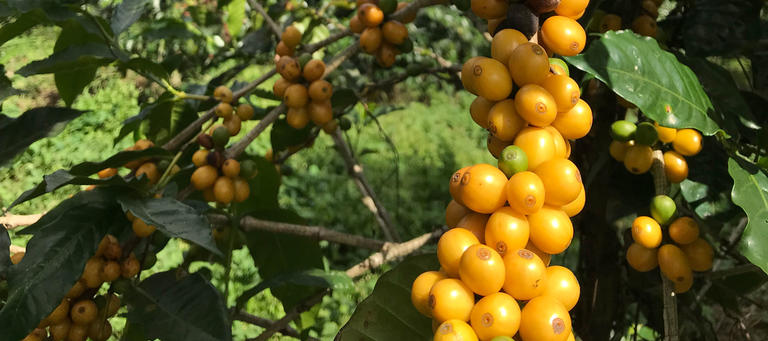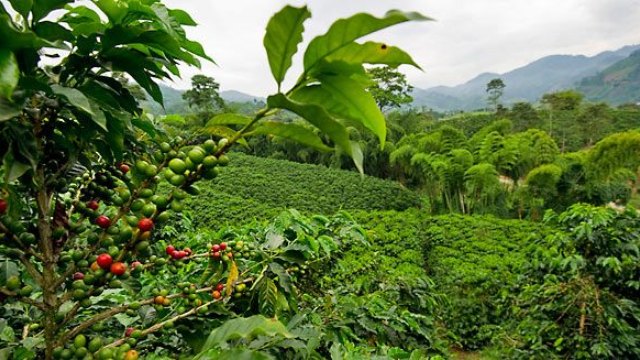[introduction of Coffee Origin] A brief history of the development of high-quality coffee in Costa Rica
Professional coffee knowledge exchange More coffee bean information Please pay attention to coffee workshop (Weixin Official Accounts cafe_style)
In the domestic single-item coffee consumption market, coffee from Costa Rica has always been very popular with guests. Xiao Bian has thought about why she can break out from other single coffee and become one of the famous representatives of Central American coffee: coffee flavor is rich, quality is excellent... In addition, Xiaobian believes that there should be something behind these popular reasons, so that coffee lovers love Costa Rica coffee. Now, let's explore her coffee history and perhaps find out.

First coffee-growing country in Central America; government support for development
Coffee began to appear in Costa Rica in 1729, when it was introduced from Cuba. This made Costa Rica the first country in Central America to grow coffee and the first to grow coffee for commercial value. After Costa Rica gained independence from Spain in 1821, the local government began to support the coffee industry with a series of policies. At that time, coffee was introduced into Costa Rica more than a hundred years later, but coffee trees have been planted about 70,000 trees, showing its development speed. Local government policies for the coffee industry include:
In 1825, the Costa Rican government introduced tax exemption. In 1832, the local government issued a law stating that coffee farmers who planted coffee on any unoccupied land could own that land directly. This example encouraged many people to grow coffee and promote coffee development. (It also indirectly explains why coffee in Costa Rica now comes mostly from private estates)

It can be imagined that when the product starts to increase, the quality will become uneven and affect competitiveness. So in order to improve the quality and value of coffee, in the early 20th century the government decreed that coffee farms or plantations located in Costa Rica should grow only Arabica coffee, thereby increasing competitiveness. This explains why Costa Rican coffee is so superior today: coffee from Costa Rica is all Arabica, and we can never find Robusta.
In 1948, the Costa Rican government created an exclusive coffee department (ICAFE: Instituto del Café de Costa Rica). It is now taken over by the Official Coffee Commission Oficinadel Café), which mainly advises the improvement of the estate from planting, post-treatment to marketing systems. For export coffee processing, the place is also very careful. Coffee beans deemed substandard for export are colored with blue vegetable dye and then returned to domestic sales. Today, about a third of Costa Rica's population is engaged in coffee or coffee-related industries, and coffee consumption per capita is twice that of Italy or the United States. The government's support for the coffee industry has indirectly contributed to Costa Rica's excellent coffee quality and competitiveness compared to other countries.

Good coffee deserves it.
Costa Rica's coffee industry is now one of the most well-organized in the world, producing 1700 kilograms per hectare. The country has a population of 3.5 million, but coffee trees can grow as many as 400 million, and coffee exports account for 25% of total exports. Costa Rica's coffee production area, various grades, types of coffee also accounted for the forefront of global consumption. It can be seen that the quality of coffee produced by her has made her a place in the global coffee market; and to be so popular, the history of the coffee industry along the way cannot be ignored.
END
Important Notice :
前街咖啡 FrontStreet Coffee has moved to new addredd:
FrontStreet Coffee Address: 315,Donghua East Road,GuangZhou
Tel:020 38364473
- Prev

Brief introduction of cultivation process and Flavor of Coffee beans in Kenya
Coffee beans in Africa and the Arab region have rich juice flavors, ranging from floral and citrus to berries and spices. Coffee from this region is also washed: processed coffee beans, including Ethiopia and Kenya, and Ethiopia is the first place where coffee magic has been encountered. Today, drinking coffee has become Ethiopia.
- Next

What are the characteristics of Ye Jia Xue Fei Coffee?
Professional coffee knowledge exchange More coffee bean information Please pay attention to coffee workshop (Weixin Official Accounts cafe_style) For friends who often run coffee shops, Ethiopia Yirgacheffe is definitely not a strange name, but what does Yirgacheffe refer to? What is it about him that keeps him on coffee shop menus? Yegashefi is in Ethiopia.
Related
- Detailed explanation of Jadeite planting Land in Panamanian Jadeite Manor introduction to the grading system of Jadeite competitive bidding, Red bid, Green bid and Rose Summer
- Story of Coffee planting in Brenka region of Costa Rica Stonehenge Manor anaerobic heavy honey treatment of flavor mouth
- What's on the barrel of Blue Mountain Coffee beans?
- Can American coffee also pull flowers? How to use hot American style to pull out a good-looking pattern?
- Can you make a cold extract with coffee beans? What is the right proportion for cold-extracted coffee formula?
- Indonesian PWN Gold Mandrine Coffee Origin Features Flavor How to Chong? Mandolin coffee is American.
- A brief introduction to the flavor characteristics of Brazilian yellow bourbon coffee beans
- What is the effect of different water quality on the flavor of cold-extracted coffee? What kind of water is best for brewing coffee?
- Why do you think of Rose Summer whenever you mention Panamanian coffee?
- Introduction to the characteristics of authentic blue mountain coffee bean producing areas? What is the CIB Coffee Authority in Jamaica?

